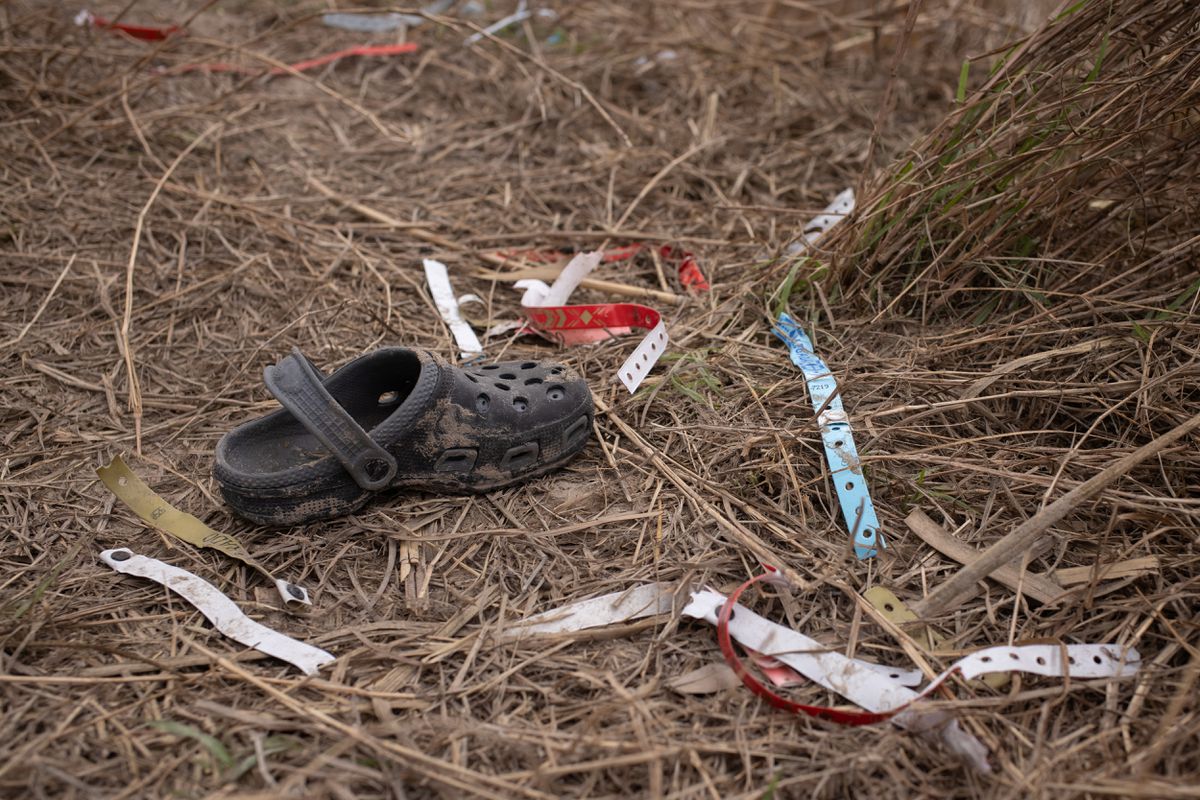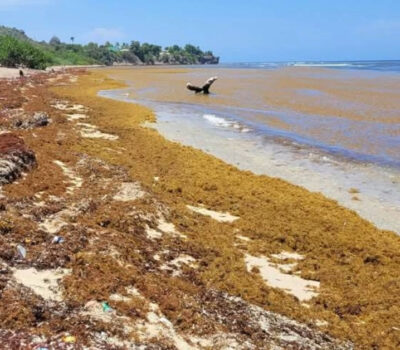Along the banks of the Rio Grande in the scrubby grassland near Penitas, Texas, hundreds of colored plastic wristbands ripped off by migrants litter the ground, signs of what U.S. border officials say is a growing trend among powerful drug cartels and smugglers to track people paying to cross illegally into the United States.
The plastic bands – red, blue, green, white – some labeled “arrivals” or “entries” in Spanish, are discarded after migrants cross the river on makeshift rafts, according to a Reuters witness. Their use has not been widely reported before.
Some migrants are trying to evade border agents, others are mostly Central American families or young children traveling without parents who turn themselves into officials, often to seek asylum.
Border Patrol agents in the Rio Grande Valley sector, which spans more than 34,000 square miles (88,000 square kilometers)along the border in southeast Texas, have recently encountered immigrants wearing the bracelets during several apprehensions, said Matthew Dyman a spokesman for U.S. Customs and Border Protection.
The “information on the bracelets represents a multitude of data that is used by smuggling organizations, such as payment status or affiliation with smuggling groups,” Dyman told Reuters.
The differing smuggling techniques come as Democratic President Joe Biden’s administration has sought to reverse restrictive immigration polices set up by his predecessor, former President Donald Trump. But a recent jump in border crossings has Republicans warning the easing of hardline policies will lead to an immigration crisis.
U.S. border agents carried out nearly 100,000 apprehensions or rapid expulsions of migrants at the U.S.-Mexico border in February, according to two people familiar with preliminary figures, the highest monthly total since mid-2019.
PURPLE BRACELET
The categorization system illustrates the sophistication of organized criminal groups ferrying people across the U.S.-Mexico border, said Theresa Cardinal Brown, director of immigration and cross-border policy at the Washington-based Bipartisan Policy Center
“They run it like a business,” said Cardinal Brown, which means “finding more patrons and looking for efficiencies.” Migrants can pay thousands of dollars for the journey to the United States and human smugglers have to pay off drug cartels to move people through parts of Mexico.
“This is a money-making operation and they have to pay close attention to who has paid,” she said. “This may be a new way to keep track.”
Criminal groups operating in northern Mexico, however, have long used systems to log which migrants have already paid for the right to be in gang-controlled territory, as well as for the right to cross the border into the United States, migration experts said.
When increased numbers of Central American were arriving at the border on express buses in 2019, smugglers kept tabs on them by double checking “the names and IDs of migrants before they got off the bus to make sure they had paid,” Cardinal Brown said.
A migrant in Reynosa – one of the most dangerous cities in Mexico across the border from McAllen, Texas – who declined to give his name for fear of retaliation, showed Reuters a picture of a purple wristband he was wearing.
He said he paid $500 to one of the criminal groups in the city after he arrived a few months ago from Honduras to secure the purple bracelet to protect against kidnapping or extortion. He said once migrants or their smugglers have paid for the right to cross the river, which is also controlled by criminal groups, they receive another bracelet.
“This way we’re not in danger, neither us nor the ‘coyote,'” he said, using the Spanish word for smuggler.
One human smuggler who spoke on conditions of anonymity, confirmed the bracelets were a system to designate who has paid for the right to transit through cartel territory.
“They are putting these (bracelets) on so there aren’t killings by mistake,” he said.
Migrants and smugglers say the use of bracelets to designate who has paid for the right to cross the river is a system required by the cartels that control waterfront territory in the conflict-ridden state of Tamaulipas.
In January, a group of migrants were massacred in Tamaulipas state just 40 miles (70 km) west of Reynosa. Twelve local Mexican police have been arrested in connection with the massacre.
Along the banks of the Rio Grande in the scrubby grassland near Penitas, Texas, hundreds of colored plastic wristbands ripped off by migrants litter . . .












